The Batman Who Laughs, Doctor Strange, Fence & More in Required Reading: Comics for 11/15/2017
Main Art by Jason Fabok Comics Lists Required Reading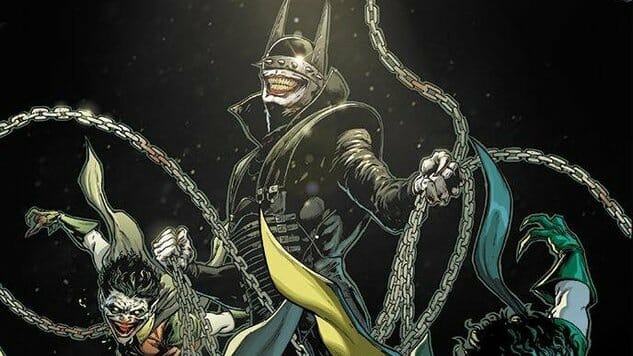
November is halfway over, but publishers aren’t slowing down as 2017 winds to a close. DC’s Metal train keeps on chugging this week with the release of The Batman Who Laughs, a creepy close look at the event’s most terrifying alt-universe Caped Crusader. Marvel launches two of its most intriguing Legacy series, with Punisher donning the War Machine armor and Loki stepping into the role of Sorcerer Supreme. If superhero theatrics aren’t your style, BOOM! Studios has a delightful children’s book and a sporty romance/rivalry, Skybound concludes one horrific series and launches another, Drawn & Quarterly offers up a moody, off-kilter graphic novel about childhood toys and Dark Horse has a one-two whammy of Mike Mignola projects.
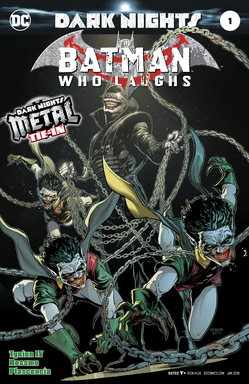 The Batman Who Laughs #1
The Batman Who Laughs #1
Writer: James Tynion IV
Artist: Riley Rossmo
Publisher: DC Comics
Metal’s publishing schedule doesn’t seem quite as inflexible as its namesake, but DC has arranged for a steady diet of related books to fill any gaps in the Scott Snyder/Greg Capullo event series. Perhaps the most anticipated of these one-shots is The Batman Who Laughs, the final deep dive into the wicked mirror-image Batmen who populate the pages of Metal. Written by Detective Comics fan-favorite James Tynion IV and drawn by Batman/The Shadow’s Riley Rossmo, The Batman Who Laughs reveals some of the sick and twisted origin of the Joker-inspired Batman, who dresses like a Cenobite and leads a pack of rabid Robins leashed to spiked collars. There’s a lot to unpack there, but Tynion’s experience juggling large Bat-casts and fondness for moments of horror should mesh well with Rossmo’s hyper cartooning and knack for off-kilter imagery. Read this one with the lights on. Steve Foxe
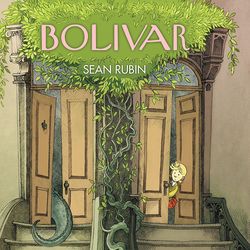 Bolivar
Bolivar
Writer/Artist: Sean Rubin
Publisher: BOOM! Studios
Sean Rubin’s Bolivar is as much a charming children’s book as it is a visual love letter to New York City. Rubin’s subtle cross-hatching and soft colors convey a sprawling, majestic panorama of the world’s most famous city, and the obvious delights its people are too busy to see. The titular dinosaur is one such wonder, a talking, mild-mannered T-Rex who enjoys corned beef sandwiches and anonymity, evading the public eye without much exertion. Only one little girl—Sybil—seems to notice the hulking, grey lizard waltzing around the Upper West Side. The book offers a more accessible reflection on mindfulness, urging the reader to live in the present moment without being consumed with life’s cyclical demands, lest surprises elude notice. That same focus should be applied to Rubin’s stunning art—these pages deserve to be studied and absorbed, not glanced upon. An especially meticulous subway mosaic of jazz musicians displays just how much care and time the artist has invested into this project. Bolivar is a loving, gentle work in story and execution, and deserves a slot in any library for readers waiting to discover the unexpected. Sean Edgar
 Doctor Strange #381
Doctor Strange #381
Writer: Donny Cates
Artist: Gabriel Hernandez Walta
Publisher: Marvel Comics
Marvel’s Legacy relaunch initiative didn’t seem to mandate major changes, with numerous books (Iron Fist, Guardians of the Galaxy) seeming to enter the new era with whatever plots were next in the hopper. Doctor Strange can’t be accused of coasting, though: the book has a new writer in the form of God Country’s Donny Cates, new artist in The Vision breakout Gabriel Hernandez Walta and a new Sorcerer Supreme as mischievous god Loki dons the cloak most often worn by Stephen Strange. The two characters just crossed paths onscreen in Thor Ragnarok and Loki is one of the most accomplished (and morally compromised) magic-users in the Marvel Universe, making this an intriguing twist to kick off the magical corner of the Legacy era. Cates is a scribe on the rise and Walta’s distinct style lends itself to the many eldritch horrors the pair might conjure up to hinder Loki’s plots and plans. While Stephen Strange will likely reclaim his self-titled book with time, this is the kind of switch-up readers expected from a line-wide initiative. Steve Foxe
 Evolution #1
Evolution #1
Writers: James Asmus, Joe Keatinge, Christopher Sebela, Joshua Williamson
Artist: Joe Infurnari
Publisher: Skybound/Image Comics
Robert Kirkman’s Skybound imprint has been picking up speed for a while now, helping to boost the careers of DC contributors Joshua Williamson and Christopher Sebela and Marvel sweetheart Donny Cates, while serving as an incubator for new talent like the creative teams of Kill the Minotaur and Horizon. The publisher’s newest launch follows the untraditional path of bringing together four writers to craft Evolution, a horror story about a massive leap in human evolution that only a handful of people seem to notice is happening. Artist Joe Infurnari, best known for projects like The Bunker, will lend his cartooning skills to the resulting body horror as James Asmus, Joe Keatinge and the aforementioned Sebela and Williamson find an unholy marriage of creative talent in this oversized debut issue. Steve Foxe
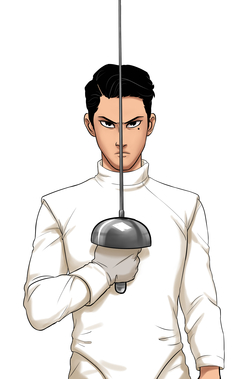 Fence #1
Fence #1
Writer: C.S. Pacat
Artist: Johanna the Mad
Publisher: BOOM! Studios
A generation of American cartoonists who grew up on translated yaoi, male/male romances created and consumed largely by Japanese women, are now entering the professional American comics sphere with projects like Check, Please! and Fence, ostensibly gay or queer male romances that often offer a more idealized take on the subject than what most young gay, bisexual and queer men experience growing up. Complex intersections of personal identity politics aside, these projects often find passionate fan bases, and Fence certainly has that potential thanks to novelist C.S. Pacat’s timeless sports-rivalry set-up—the rough but dedicated poor kid versus the polished but isolated rich kid—and artist Johanna the Mad’s slick, inviting and dreamboat-worthy cartooning. Fans of the anime sensation Yuri on Ice are likely chomping at the bit for this well-executed fencing rivalry set in an elite all-boys school—a.k.a. ground zero for cute-boy drama. Check back later this week for a more in-depth review. Steve Foxe
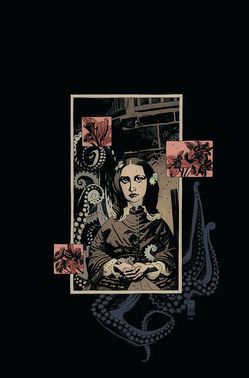 Jenny Finn #1
Jenny Finn #1
Writers: Mike Mignola, Troy Nixey
Artists: Troy Nixey, Dave Stewart
Publisher: Dark Horse Comics
Jenny Finn first launched in 1999 courtesy Oni Press, with only two of its four issues hitting shelves before being swallowed into an existential void, not dissimilar to the one hinted at it within its early pages. Almost two decades later, co-writer Mike Mignola stands atop a sequential art empire of horror-themed comics and co-writer/artist Troy Nixey can list an underrated gem of a horror movie in his curriculum vitae, but Finn remains a lost curiosity. The titular character is a young girl who wafts through a old timey seaport town, hailed as a messiah by the ship-hands and sailors she crosses. Yet those poor souls soon spout tentacles, barnacles and, yes, even fins from their bodies, answering the hypothetical of what a collaboration between Innsmouth-era H.P. Lovecraft and David Cronenberg might look like. The relaunched miniseries contains new coloring from Dave Stewart, who layers appropriately nauseating sheens of yellow and brown to the curdling malignancy festering at the core of this book. Jenny Finn is a bizarre footnote of comics lore, and its renewed existence will should scratch an itch for eldritch mystery. Sean Edgar
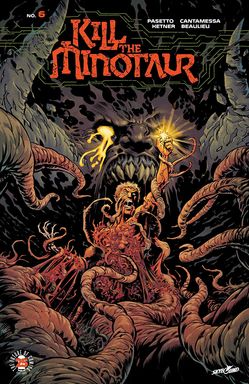 Kill the Minotaur #6
Kill the Minotaur #6
Writers: Christian Cantamessa, Chris Pasetto
Artist: Lukas Ketner
Publisher: Skybound/Image Comics
Kill the Minotaur’s bloody combo of Ray Harryhausen adventure and extreme body horror climaxes with its sixth and final issue this Wednesday. Writers Christian Cantamessa and Chris Pasetto shower ancient mythology in a torrent of blood and viscera, repainting the labyrinth of Greek myth as a pulsing, living organism, its walls made of flesh and lined in varicose veins. None of these visuals would hit the bottom of your stomach without artist Lukas Ketner’s grotesque renderings of physiology gone perversely wrong. Kill the Minotaur is currently on the road to the silver screen with The Walking Dead’s Robert Kirkman producing, but this comic unfurls a monstrous scope that any film budget would struggle to preserve. Sean Edgar
 Punisher #218
Punisher #218
Writer: Matthew Rosenberg
Artist: Guiu Vilanova
Publisher: Marvel Comics
Matthew Rosenberg has ascended quickly up the ladder at Marvel, buoyed by strong runs on Secret Warriors, Kingpin and Rocket Raccoon. In all of his work, the writer has invited a strong DIY ethos to disrupting longstanding properties with fresh takes. Kingpin embraces the sweeping ensemble complexity of a Mario Puzzo novel and his Secret Warriors run captures the piss and vinegar of disillusioned youth. We don’t envy any writer tasked with taking on the Punisher in this day and age; disheveled, automatic-gun-toting white dudes enacting vengeance is an unfathomably prescient issue. Segregated from Frank Castle’s Vietnam-era origins, the character lies as far from heroism as any concept can get. Like previous scribes Matt Fraction and Rick Remender, Rosenberg will attempt to circumvent the Guns & Ammo porn to play with continuity and oft-neglected corners of the Marvel U, much as he’s done in his previous efforts. In this first arc, Castle will don the War Machine armor formerly worn by the departed James Rhodes to wage his eternal war on a pair of rocket jet boosters. Artist Guiu Vilanova has mostly lent his hand to Dynamite licensed properties including The Twilight Zone and Dark Shadows, and his sinewy take on Castle should contrast nicely against the high sci-fi adventure elements, emphasizing the character’s underlying tragedy. Sean Edgar
 Rasputin: Voice of the Dragon #1
Rasputin: Voice of the Dragon #1
Writers: Mike Mignola, Chris Roberson
Artist: Christopher Mitten
Publisher: Dark Horse Comics
It’s a big week for Mignola fans—in addition to the long-lost Jenny Finn, the prodigious creator joins frequent co-writer Chris Roberson and artist Christopher Mitten to launch Rasputin: Voice of the Dragon, a look back at one of Hellboy’s first foes and the antagonist of the heroic demon’s first film outing 13 years ago. As the ongoing “Mignolaverse” has narrowed its cast, saying goodbye (for now, at least) to Hellboy himself and destroying large chunks of the world in the pages of B.P.R.D., the publishing line has looked to the past with miniseries like The Visitor: How and Why He Stayed, a Black Flame origin story and Hellboy and the B.P.R.D. tales set during the ‘50s, filling in blanks from before the globe crumbled under unknowable monstrosities. Voice of the Dragon is set before Hellboy came to Earth, as the character’s father figure Professor Bruttenholm goes on the hunt for the titular Russian mystic thought long-dead. Rasputin is now in league with the Nazis (an all-too-timely plot in 2017!) but his fiendish plans will result in at least one red-skinned net good for the world. Steve Foxe
 Toys Talking
Toys Talking
Writer/Artist: Leanne Shapton
Publisher: Drawn & Quarterly
Leanne Shapton is a master at evoking mood through a spattering of images and words. Was She Pretty? captured anti-romance at its rawest with a series of vignettes about vacuous 20-somethings reflecting on partnership. Last year’s Swimming Studies took a similar approach to sports, using deep, raw stains to conjure the smell of chlorine and the tension of wrinkled fingers. But all of these graphic novels have felt unabashedly, capital-A adult: poetic, deep and somewhat inaccessible. Toys Talking advertises its function in its title—a slew of stuffed animals riff on their own existence. Each spread uniformly presents a sketch of an animal with an opposite page highlighting a lone thought. A blue, sweater-clad mouse protests, “That is no concern of ours,” a felt cat implores, “Tell me your troubles,” and so on, a menagerie of yarn critters monologuing with each turn. It may sound superficially pretentious, but it’s also an engaging exercise for the reader to fill in the context and connect the relationships between these toy-box denizens. Shapton veers from her usual watercolors to use sketchy, black inks on solid fill backgrounds, adding a disarming simplicity that calls Beatrix Potter and A.A. Milne to mind. It’s a delightful, puzzling and articulate work, and whether its vagueness engages you or not, it confirms Shapton as one of our generation’s finest visual poets. Sean Edgar